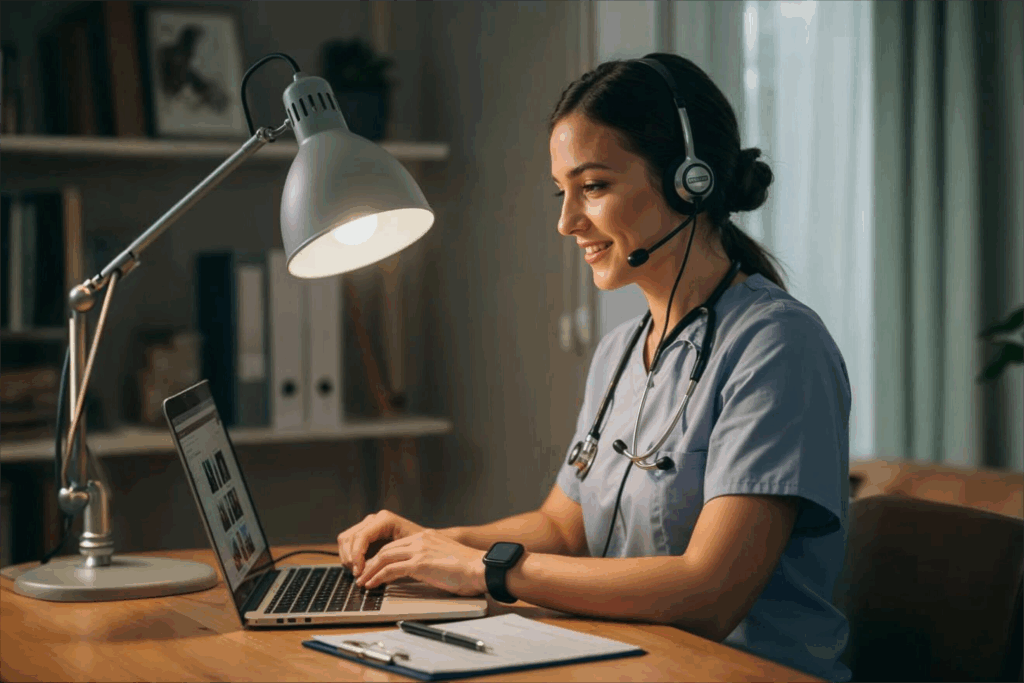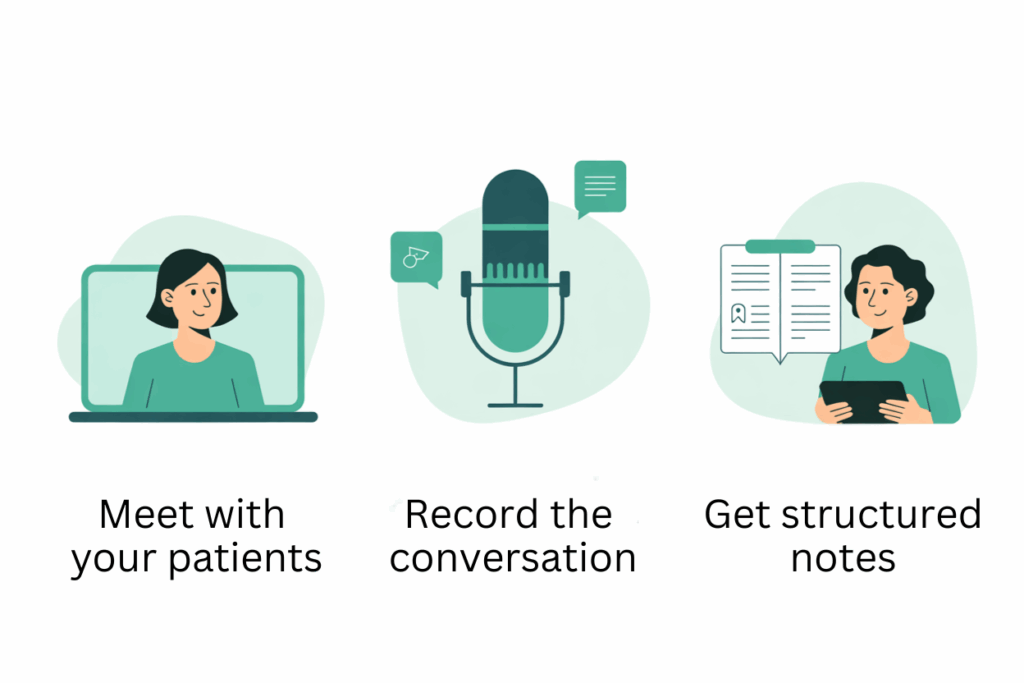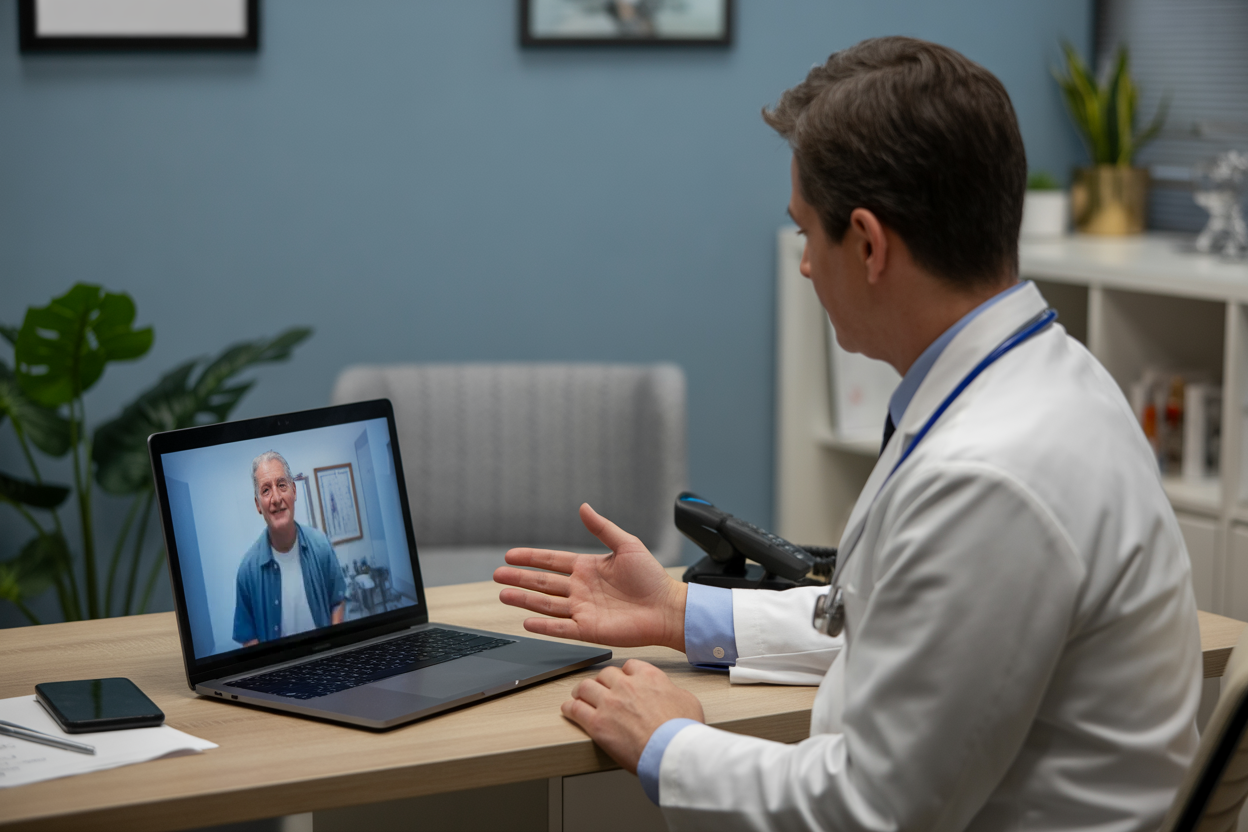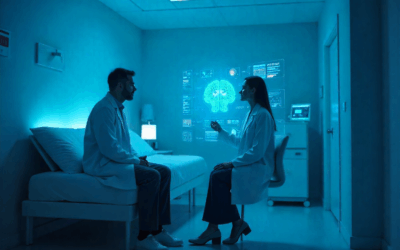Quick Summary
- AI medical scribes for telehealth save doctors up to 2 hours daily by automating charting during video visits.
- Improves accuracy of SOAP notes by 40%, even in multi-speaker calls.
- Reduces physician burnout and allows more focus on patient interaction.
- Integrates with EHR systems for seamless export and compliance.
- Links to related Dorascribe content: Emergency Medicine, Physiotherapy, and Multilingual Scribing.

Why Telehealth Needs AI Medical Scribes
Telehealth adoption surged in 2020 and remains a cornerstone of modern healthcare. But with virtual care comes new documentation challenges: physicians must balance patient interaction with manual note-taking during video calls. This often leads to incomplete notes, errors, and longer after-hours charting.
AI medical scribes for telehealth, like Dorascribe, solve this challenge by transcribing and structuring visit notes in real time, letting providers focus on patient care rather than typing.
Benefits of AI Medical Scribes in Telehealth
1. Reduced Charting Time
AI scribes cut documentation time by 50–55%, enabling providers to reclaim hours each week.
2. Greater Accuracy in Virtual Settings
Even in noisy or multi-speaker environments, AI diarisation maintains >90% accuracy, reducing dictation errors.
3. Improved Patient Connection
By removing the need to type during visits, physicians can maintain eye contact and improve patient satisfaction.

4. Seamless EHR Integration
Notes generated during telehealth sessions can be exported to EHRs or shared securely with care teams.
How Dorascribe Works in Telehealth
- Real-time transcription captures dialogue throughout the virtual visit.
- SOAP note formatting structures the content into Subjective, Objective, Assessment, and Plan.
- One-click export ensures notes are ready for patient charts or billing.
- Multilingual support makes it possible to scribe visits in English, Spanish, French, Portuguese, and more.
Learn more about how Dorascribe improves efficiency in real-time scribing.
Telehealth Specialties That Benefit Most
- Family Medicine & Primary Care: Frequent, conversational visits with high documentation load.
- Psychiatry: Sensitive conversations that require verbatim accuracy. See AI Scribes in Psychiatry.
- Physiotherapy & Rehab: Hybrid care where documenting exercises during video calls is crucial.
- Emergency Teleconsults: Rapid, accurate notes critical for handoffs.

Compliance & Data Security in 2025
Telehealth providers must ensure compliance with regulations like:
- HIPAA / PHIPA / GDPR for patient privacy
- EU AI Act (2025) – AI scribes classified as low-risk clinical documentation tools
- BAA support for covered entities
See our detailed guide on ensuring patient privacy.
Implementation Checklist: Getting Started
- Day 1–2: Pilot Dorascribe in shadow mode during virtual visits.
- Day 3–4: Enable SOAP note auto-formatting.
- Day 5: Connect with your EHR for seamless documentation.
- Day 6–7: Review impact: aim for at least 50% charting time reduction.
FAQ: AI Medical Scribes in Telehealth
Q1: Can AI scribes handle multi-speaker video calls?
Yes, diarisation separates physician, patient, and caregiver voices with >90% accuracy.
Q2: What about poor internet quality?
AI scribes cache locally and sync when stable connections return.
Q3: Are telehealth AI scribes secure?
Yes, Dorascribe uses AES-256 encryption and complies with HIPAA, PHIPA, and GDPR.
Q4: Does it support multilingual visits?
Yes, Dorascribe supports English, Spanish, French, Portuguese, and Italian.
Final Thoughts
As telehealth continues to grow, AI medical scribes for telehealth are becoming essential for efficient, accurate, and patient-focused virtual care. By reducing charting time, improving accuracy, and ensuring compliance, Dorascribe helps providers deliver higher-quality care in less time.
Ready to see how Dorascribe can transform your telehealth practice? Start your free trial today.




